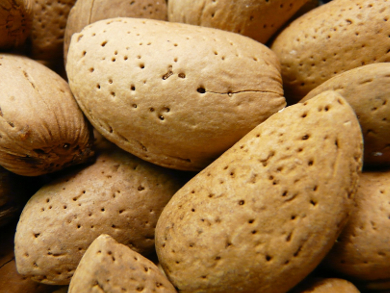Supercapacitors are electrical components with promising properties for high-power devices that require rapid charge/discharge cycles. They store a lot more energy than common electrolytic capacitors, and charge much faster and have longer life cycles than batteries. Supercapacitor electrodes have commonly been made from carbon materials, e.g. carbon nanotubes or graphene, which can be costly to produce.
Kaili Zhang, City University of Hong Kong, China, and colleagues have developed a low-cost, renewable, and environmentally friendly electrode material that uses almond shells as the carbon source. The team prepared activated microporous carbon (AMC) by cleaning and carbonizing almond shells. The shells were then treated with either KOH or HNO3 to chemically activate their surface and generate micropores. According to the team, the simple preparation method is suitable for mass production.
The researchers investigated the structure of the material using X-ray diffraction (XRD), transmission electron microscopy (TEM), and X-ray photoelectron spectroscopy (XPS). They found porous structures with high specific surface areas. The material was partly graphitized, which enhances its electrical conductivity. The team also tested the AMC’s suitability as an electrode material for supercapacitors and found good rate capability, high specific capacitance, and excellent cycle stability.
- Activated Microporous Carbon Derived from Almond Shells for High Energy Density Asymmetric Supercapacitors,
Chun Wu, Shaoran Yang, Junjie Cai, Qiaobao Zhang, Ying Zhu, Kaili Zhang,
ACS Appl. Mater. Interfaces 2016.
DOI: 10.1021/acsami.6b02942



